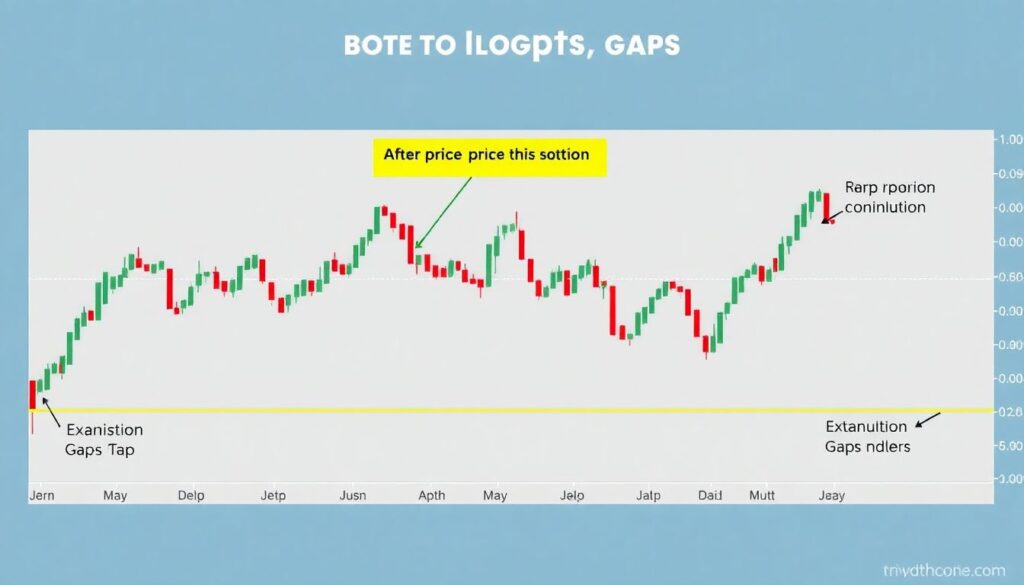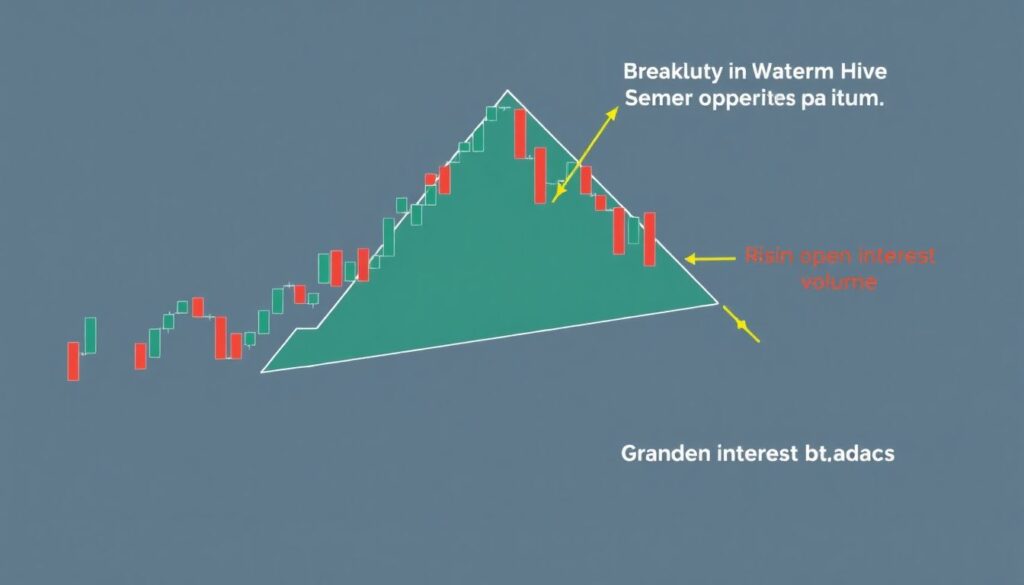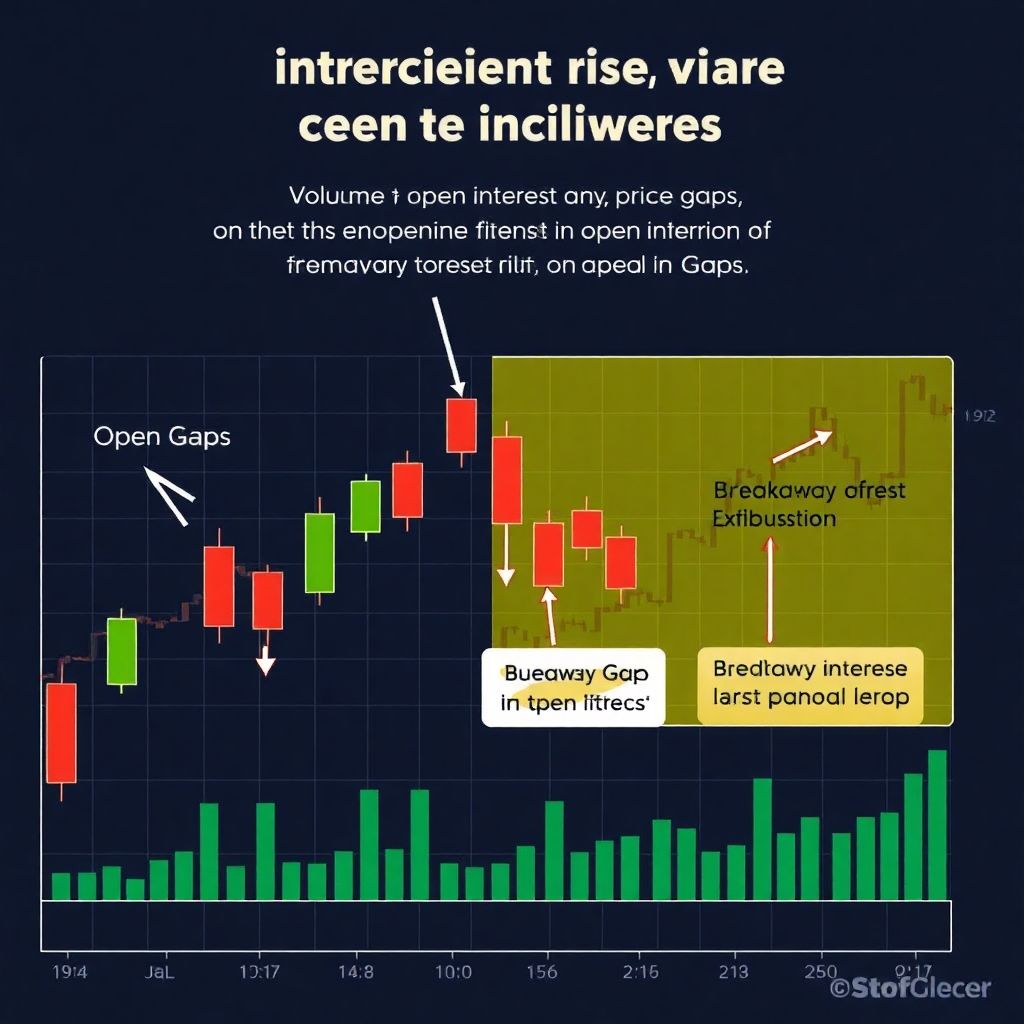Understanding Open Interest and Price Gaps

Open interest and price gaps are two powerful indicators used by traders to anticipate potential breakaway moves in the financial markets. Open interest reflects the number of outstanding derivative contracts—such as futures or options—that are yet to be settled. On the other hand, price gaps occur when there’s a sharp difference between the closing price of one trading period and the opening price of the next, often due to unexpected news or market sentiment shifts. When used together, these indicators can signal the beginning of strong, sustained trends, known as breakaways.
Step-by-Step Approach to Predicting Breakaways
1. Monitor Unusual Changes in Open Interest
Start by identifying periods where open interest significantly diverges from recent norms. A sudden increase in open interest, especially when accompanied by rising volume, suggests fresh capital entering a position—typically a precursor to a directional move. Rising prices combined with rising open interest often imply bullish sentiment, while falling prices with increasing open interest suggest bearish conviction.
2. Identify and Categorize Price Gaps

Not all price gaps are created equal. Focus primarily on breakaway gaps, which occur at the beginning of major moves and signal the start of new trends. These typically form after a period of consolidation and are often supported by a surge in volume. Compare with common gap types like exhaustion or runaway gaps, which can mislead traders if taken out of context. Proper classification is key to accurate forecasting.
3. Look for Confluence: High Open Interest with a Breakaway Gap
When a breakaway gap is accompanied by a noticeable spike in open interest, it often signifies institutional activity behind the move. This confluence increases the validity of the breakout. Make sure the price is also breaking key support or resistance levels to confirm the move isn’t just a temporary reaction. Strong follow-through in price and volume solidifies the breakaway signal.
Common Mistakes to Avoid
1. Misinterpreting Gaps in Low Volume Environments
One of the most frequent errors traders make is acting on gaps that occur during illiquid trading hours, such as premarket or after-hours sessions. These gaps might close quickly once regular trading resumes. Always confirm that gaps are supported by volume and appear during major market sessions.
2. Ignoring Overall Market Context
Open interest and gaps are only parts of a larger puzzle. Relying solely on these indicators without considering broader market sentiment, macroeconomic events, and correlated assets can lead to poor entry decisions. Always analyze the setup within the full market context.
3. Confusing Short Covering with Conviction
A sharp rise in open interest might reflect short covering rather than new bullish positions. Carefully examine price action and volume. If prices rise but open interest falls, this could indicate exiting positions rather than initiation of new trends.
Expert Tips for Beginners
1. Stick to Liquid Markets
New traders should focus on highly liquid instruments like major stock indices, commodities, or popular currency pairs. Open interest data in thinly traded markets can be misleading or easily manipulated. Liquid markets provide cleaner signals and reduce the risk of false breakouts.
2. Use Open Interest as a Confirmation Tool

Rather than relying on open interest in isolation, use it to confirm your technical or fundamental analysis. For example, a breakout from a chart pattern like a triangle or flag is more likely to succeed if backed by increasing open interest and strong volume.
3. Combine with Volatility Indicators
Volatility tools like ATR (Average True Range) or Bollinger Bands can help gauge the significance of a gap. A sudden expansion in volatility, along with high open interest and a breakaway gap, adds another layer of confirmation to the move.
Conclusion: Integrating Open Interest and Gaps in Your Strategy
To effectively use open interest and price gaps for predicting breakaways, traders must approach analysis systematically. Track open interest trends, classify gap types correctly, and always seek confirmation through volume and market context. While no single indicator can guarantee success, the strategic combination of these tools, when used with discipline and patience, provides a strong edge in anticipating powerful market movements.

